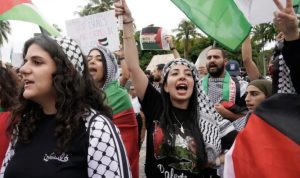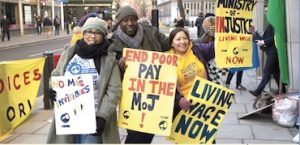March 10, 2023
Gabriel Huland
The arrest and killing of Jhina Mahsa Amini, a 22-year-old Kurdish-Iranian woman, for not wearing the hijab “properly” set off a wave of women-led protests challenging the Iranian regime in unprecedented ways. Although it is too early to assess how the protests will affect the country’s political institutions, a preliminary analysis indicates that they will prompt President Ebrahim Raisi to intensify the efforts to deepen economic ties with China and Russia. Iran is undergoing a severe economic crisis, maybe the worst since the 1980s, when the Iran-Iraq War led to a contraction of more than 50% in the country’s per capita GDP.[1] From the regime’s perspective, building closer alliances with China and Russia is the most feasible way to create the fiscal leeway that would allow the Iranian government to relieve the social pressure on the population hit hardest by the current scenario of slow growth, high inflation, and devaluation of the Iranian rial.
The current protests are the largest since the “Green Movement” challenged the fraudulent victory of Mahmoud Ahmadinejad in the June 2009 presidential elections. The demonstrations began in Tehran on September 16, 2022, when Jhina was pronounced dead by Iranian authorities, but quickly spread to different parts of the country, including the cities of Mashhad and Isfahan and the impoverished, rural provinces of Kurdistan and Sistan-Baluchistan. According to Al Jazeera, more than 1,000 protests in approximately 150 cities have occurred since then. The protestors are calling for the regime’s fall, including Ayatollah Ali Khamenei, Iran’s supreme leader since 1989, and Ebrahim Raisi, the recently-elected head of the government. The demonstrations and sit-ins occur in public squares, universities, schools, and workplaces. Oil industry workers, firefighters, and other segments of the working class have joined the protests, something that did not happen since the 1979 revolution.
The Iranian regime responded to the protests with extreme violence. Human Rights Watch reported that the Iranian police and paramilitary groups have killed more than 500 people and arrested almost 20,000 since the first demonstrations erupted. As other authoritarian regimes have done in the face of widespread opposition, Iranian authorities refused to acknowledge the protests, calling them riots incited by foreign countries such as the United States and Israel. Speaking during the celebrations of the 44th anniversary of the Iranian revolution, President Raisi referred to the protests as illegal activity contrary to the values of the Islamic Republic. Notwithstanding the violence employed to quell the uprising, some observers noted that the government relaxed some rules regulating hijab usage in Iran.
Iranian women face the oppression of one of the most authoritarian regimes in the world. They suffer from the imposition of an abusive dress code and many restrictions on divorce, child custody, marriage, and inheritance rights. Women encounter much more barriers than men to participate in the labour market and public life in general. As Tawseef Ahmed Mir claims, “[Iranian] women are at a disadvantageous position owing to their relative lack of adequate access to education, economic power, and voice in economic and political decision-making. While women carry the larger burden of ensuring their families’ well-being, they are also the most economically vulnerable. Women have a harder time finding jobs, are among the first to get laid off, and have fewer workplace protections. As those primarily responsible for running their households, women face increased loads of stress trying to feed their families, obtain needed medication, and buy necessary goods amidst skyrocketing levels of inflation.”[2]
Women and other discriminated groups, such as the Kurds and the Baluchis, are playing a prominent role in the protests because they suffer the most under the increasing economic hardships that the Iranian people have been experiencing in the last few years. The protests are not only about the abusive dress code but also the result of a situation considered unsustainable by a growing number of people in the country. According to Iran International, a privately-owned, UK-based news website, more than one-third of the Iranian population live in extreme poverty, a figure that doubled in 2022 alone. To be above the poverty line, a family of four must have a monthly income of at least US$500. Inflation rates in the 2022 fiscal year exceeded 50%, and the rial devaluated by around 50% in the same period. Currently, the unemployment rate revolves around 10% among the general population but rises to 15% for young people. Whereas almost 70% of the male population is economically active, only 13% of women are employed or looking for a job. The minimum wage in the country is approximately US$150.
The economic crisis is a result of several factors. First, the United States and other countries have imposed sanctions on Iran for over four decades. A sanctions regime against Iran has been in place since the 1979 revolution ousted the Western-backed regime of Mohammad Reza Pahlavi. The sanctions include billions of dollars in Iranian assets that are kept illegally frozen in US banks and a ban on trading goods and technology with the country, especially oil and petrochemical products. The Obama administration lifted some of these sanctions as part of the 2015 nuclear agreement between the United States, the European Union, and Iran that provided for the regulation of the Iranian nuclear program. The deal was celebrated as a major diplomatic breakthrough of the Obama administration. However, the period of détente between the United States and Iran was short-lived. With the accession of Donald Trump to the US presidency in 2017, the sanctions were reimposed, pushing the country into a two-year recession. In 2018-2020, the Trump administration imposed more than 960 sanctions against Iran or Iranian officials. The fact that the US government refused to lift the embargo on Iran’s healthcare system during the COVID-19 pandemic, when the country was experiencing a high number of infections, hospitalisations, and deaths, epitomises the brutal nature of the sanctions regime laid down on Iran by the United States and its allies.
Iran’s current economic problems are also a result of the economic reforms that consecutive governments carried out since the end of the Iran-Iraq War (1980-88). The first set of reforms, introduced during President Akbar Hashemi Rafsanjani’s two presidencies (1989-1997), included a limited privatisation program and the partial liberalisation of trade and small changes in the management of the exchange rate. They were aimed at rebuilding the economy by expanding the private sector and attracting foreign investments. Different analysts claim that this liberalisation program was flawed and ineffective because the privatisation of state-owned enterprises benefitted above all government-linked foundations and individuals. For example, half of the shares of the 331 companies that were fully or partially “privatised” during 1989-1994 went to parastatal organisations.[3]
Notwithstanding their biased or lopsided nature, the reforms irreversibly changed the country’s economic landscape. Similar to what occurred in other countries of the region, such as Egypt and Syria, although at a slower pace, the reforms created a new capitalist class that rose from regime structures, becoming relatively autonomous from the state but still heavily reliant on it. This new class is linked to the Iranian Revolutionary Guard Corps (IRGC), especially to members of the Basij militia. In 2009, Roozbeh Safshekan and Farzan Sabet argued that “between 1979 and 2009 we can see the transformation of the IRGC from a pro-Khomeini militia into a vast social-political-economic-security complex that today permeates every aspect of Iranian society.”[4]
Along similar lines, Ali Alfoneh claimed that the IRGC is an economic powerhouse. In his words, “As important as its political influence may be, however, the IRGC also has economic influence. Within the Islamic Republic, and increasingly in Iran’s external trade, the IRGC is an economic powerhouse. From its modest post war reconstruction activities, it has reconfigured itself as the dominant player in large infrastructure projects. It has sought to leverage its experience in defence industries to enter the lucrative consumer goods sector, even at the expense of private enterprises. Its involvement in the black market frustrates Iranian businessmen.”[5]
Iran’s large oil reserves have prevented the country from collapsing despite more than 40 years of international isolation and liberalisation policies that created a new capitalist class. Oil exports still amount to almost 80% of the country’s exports, with China being its primary purchaser. According to a data intelligence firm quoted by Reuters, “China’s December [2022] imports of Iranian oil hit a new record of 1.2 million bpd, up 130% from a year earlier.”[6] Iran also sells crude oil and oil-derived products to Venezuela and Syria. President Raisi recently concluded an official visit to Beijing in which he was assured by the Chinese leader Xi Jinping that the partnership between both countries would continue to grow. But the extent to which the Chinese government can expand the partnership with Iran, however, is limited, mostly because it also cultivates a solid relationship with Saudi Arabia, Iran’s greatest rival in the Middle East. Another key Iranian partner is Russia, especially in the arms and defense industries. As it has been widely reported, Iran is selling drones and missiles that Russia is using in Ukraine.
The dim prospect for a revival of the nuclear deal also exhorts the Iranian regime to establish strategic partnerships with China and Russia. Recent attempts to resume the negotiations of the agreement, undertaken mainly by the European Union, have failed. The Biden administration recently announced that it would not seek to revive the deal and would look instead into “alternative options to ensure the Islamic Republic could not obtain a weapon of mass destruction.”[7] “Alternative options” is most likely a euphemism for continuing the Trump administration’s “maximum pressure” policy of using economic sanctions to weaken the Iranian government. But the United States does not have that many options to confront Iran, as it is now busy with its domestic issues, as well as with the Ukraine war and the competition with China. The final nail in the coffin of the nuclear deal was the Iranian regime’s brutal response to the protests, which added tension to the already fragile relationship between the United States, the European Union, and Iran. Also, Iran’s regional foreign policy of seeking more influence on and interfering in the politics of countries such as Iraq, Lebanon (via Hezbollah), Syria, and Yemen reduces the prospect of an understanding with Western countries.
The current wave of protests in Iran is posing one of the most severe challenges the Iranian regime has faced in a long time. Raisi’s government finds itself squeezed between a powerful wave of protests calling for the fall of the regime of the ayatollahs and an international order marked by polarisation, conflicts, and a shaky economy. Even if the protests scale down for now, a new wave of demonstrations in the near future cannot be ruled out. This situation is prompting the regime to double down its efforts to cement deeper ties with China and Russia as a means to relieve the social pressures on the population caused by the economic crisis. However, the extent to which these efforts will be successful is yet to be seen.
[1] Melani Cammett, Ishac Diwan, Alan Richards and John Waterbury. A Political Economy of the Middle East.
[2] Tawseef Ahmad Mir. “Living under Sanctions: The Perils of Being a Woman in Iran.”
[3] Kevin Harris. “Vectors of Iranian Capitalism: Privatization Politics in the Islamic Republic,” 221.
[4] Roozbeh Safshekan and Farzan Sabet. “The Ayatollah’s Praetorians: The Islamic Revolutionary Guard Corps and the 2009 Election Crisis.”
[5] Ali Alfoneh. “How Intertwined Are the Revolutionary Guards in Iran’s Economy?”
[6] Alex Lawler. “Bozorgmehr Sharafedin and Chen Aizhu. Iranian oil exports end 2022 at a high, despite no nuclear deal.” Reuters. January 15, 2023. https://www.reuters.com/business/energy/iranian-oil-exports-end-2022-high-despite-no-nuclear-deal-2023-01-15/.
[7] Tom O’Connor. “With No Nuclear Deal, US Eyes ‘Other Options,’ Iran Says JCPOA ‘Only’ Way.” Newsweek. January, 27, 2023. https://www.newsweek.com/no-nuclear-deal-us-eyes-other-options-iran-says-jcpoa-only-way-1777205.





